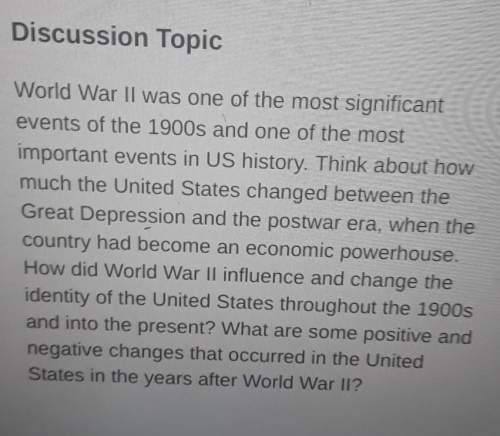
Canada
Lesson 1: The Physical Geography of Canada, continued
Ab Defining
1. Define province and
territory
Canada's Physical Landscape
Guiding Question How is Canada's physical geography similar to
and different from that of the United States?
Canada is a very large country with an area of 3.86 million square
miles (10 million sq. km). However, it also has a low population.
Most people live in the southern part of the country.
Canada is divided into 10 smaller units, or parts, called
provinces. A province is an administrative unit similar to a state.
Administrative means "managed" or "governed" Each province has
its own government. Canada also has three territories. Territories
are lands administered by the national government.
Canada is divided into five regions, as shown below.
Canada
Quebec
and
Ontario
Prairie
Provinces
Atlantic
Provinces
British
Columbia
Northern
Lands
Marking the
Text
2. Read the text on the
left. Highlight the text
that describes
the climate of the
Atlantic Provinces in
one color. Then
highlight the text that
describes the climate
of Quebec and Ontario
in another color.
Ab Determining
Word Meaning
3. What is the difference
between a coniferous
tree and a deciduous
tree?
Copyright © McGraw-Hill Education. Permission is granted to reproduce for classroom use.
The Atlantic Provinces include Nova Scotia, New Brunswick,
Prince Edward Island, and Newfoundland and Labrador. They
border the Atlantic Ocean. Newfoundland and Labrador are
covered by highlands. The other Atlantic Provinces have lowlands
and plateaus. Most of this area has a humid continental climate.
Winters are cold, summers are warm, and rainfall is high.
Quebec and Ontario start in the south at the St. Lawrence River
and the Great Lakes and extend into northern Canada. The
southern area of this region is a lowland plain. It has a humid
continental climate with a lot of rainfall and mild temperatures.
This gives it a long growing season.
In the north, there is a large plateau called the Canadian Shield.
A shield is a large area of flat land with ancient, hard rock. The
climate is subarctic. It has long, cold winters and mild summers,
Forests cover much of the northern area. These forests include
two types of trees: coniferous and deciduous. Coniferous trees
are evergreens, which stay green all year. They have cones that
hold seeds. They also have needles instead of leaves. Deciduous
trees lose their leaves in the fall.
The Prairie Provinces are Manitoba, Saskatchewan, and Alberta,
This land is covered by plains, which rise higher in Alberta than in
Manitoba. The region slopes down from west to east.
Reading Essentials and Study Guide

Answers: 3


Another question on History

History, 21.06.2019 19:00
How were religious services different in the first great awakening than in previous generations?
Answers: 1

History, 22.06.2019 01:30
What statement characterizes japan’s economy during the meji restoration?
Answers: 3

History, 22.06.2019 01:30
Which of these is a role of congress? a) to veto legislation b) to pass the federal budget c) to nominate cabinet members d) to interpret the constitution 2) which of these is a power of the legislative branch? a) declare war b) enforces laws c) interprets laws d) negotiates treaties 3) a two/thirds vote of each house of congress is required to a) impeach the u.s. president. b) approve presidential appointments. c) pass an appropriation or tax bill. d) pass a bill over the president's veto. 4) the chief purpose of congressional committees is to a) draft legislation for consideration by the full congress. b) act as a group to which the president can direct his lobbying effort. c) provide a place for lobbyists and special interest groups to get support. d) hold hearings so that bills can be evaluated and studied prior to voting. 5) after a bill has been passed by both houses of congress it a) becomes a law. b) is sent to the president. c) returns to the house of origin for verification. d) is sent to a subcommittee in the house or senate. 6) house of representatives passes a spending bill → senate debates the spending bill → senate passes the spending bill → ? what completes this sequence of events? a) the spending bill becomes a law b) the states must approve the bill c) the supreme court reviews the bill d) the president must act on the bill eliminate
Answers: 1

History, 22.06.2019 01:30
According to article 2, what was george washington's major concern about the rebellion in massachusetts?
Answers: 1
You know the right answer?
Canada
Lesson 1: The Physical Geography of Canada, continued
Ab Defining
1. Define...
Lesson 1: The Physical Geography of Canada, continued
Ab Defining
1. Define...
Questions



English, 06.11.2020 04:20

English, 06.11.2020 04:20

Mathematics, 06.11.2020 04:20


Law, 06.11.2020 04:20

Mathematics, 06.11.2020 04:20

Mathematics, 06.11.2020 04:20




Mathematics, 06.11.2020 04:20

Engineering, 06.11.2020 04:20

French, 06.11.2020 04:20

History, 06.11.2020 04:20


Mathematics, 06.11.2020 04:20

English, 06.11.2020 04:20




